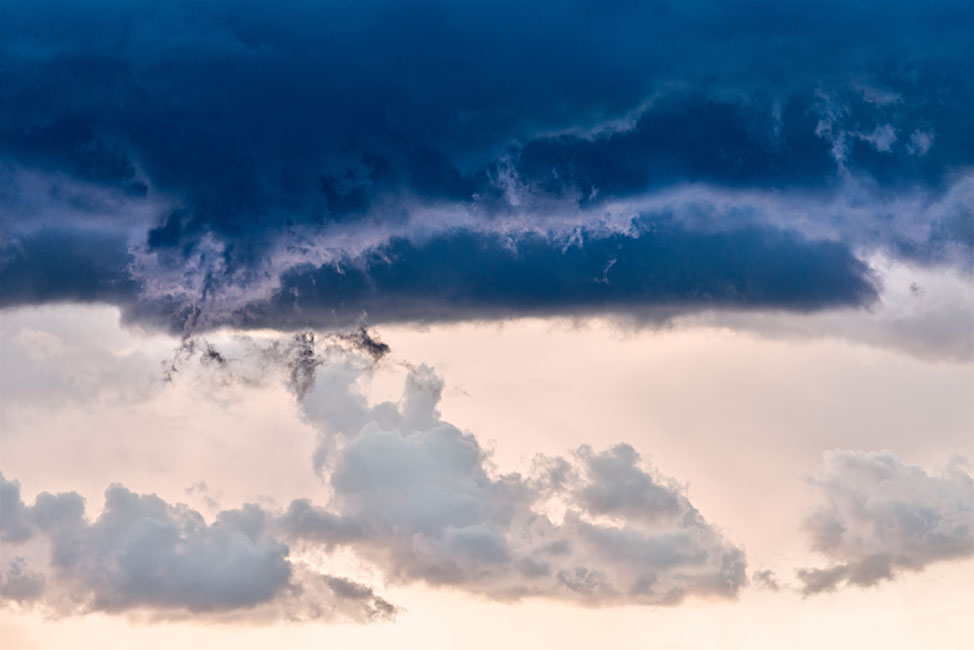One Shot: Spin Doctor
Transforming your images, transforming your vision
The old saying, "Bad weather is good weather for photography," was taken to the limit on a Mentor trek in northern Michigan on an October day not long ago. Sunset found trek leader Mark Alberhasky and his students on the shore of Lake Michigan as a squall came in fast and hard. Wind gusts to 40 miles per hour blew over unattended tripods and formed the clouds over the lake into dramatic, picture-perfect forms. "The most interesting light was at the interface of the water horizon and the light space below the clouds," Mark says, "and I was using the 200mm focal length of the zoom lens and just moving along that line, watching for the way the shapes arranged themselves to see where the interesting abstracts were."
It was a good technique for capturing the essence of a visually striking scene, but perhaps an equally good move came later when Mark was at his computer, studying one particularly arresting image from the day's take.
"I found the blue in the clouds to be almost too exaggerated and thus not realistic," he says. He first reduced the intensity of the color a bit, but didn't like the result. Then, another thought: "Could the blue clouds be perceived as water? I inverted the image, and suddenly there was a beautiful set of waves, with spray and foam ripped from the crests by the wind." Rotated 180 degrees, the image told a new and different story as the threatening sky became threatening waves, with a clearing sky above them.
Mark doesn't suggest that photographers always view scenes with "one-eighty spin treatments" in mind, but he does say it's a good idea to keep your eyes open for "what if?" opportunities. "A lot of photographers just see reality—the trees, the chair—but when you learn to look in terms of the shapes of elements, in terms of a collection of lines and negative spaces, you start shooting not just documentary images, but abstracts. I think a lot of images that end up in the fine-art genre of photography are those kinds of images, images in which photographers have really noticed the balance of shapes and spaces, or seen the relationship of colors or qualities of light. And when they make a picture because of those qualities, they've made a photographic image that absolutely transcends a documentary photograph."







